Civils.ai가 지반 공학에 AI를 사용하는 방법 - YouTube https://www.youtube.com/watch?v=EZZOMXjERAI Transcript: (00:00) [음악] 외국 lukic 저는 civils AI의 창립자 중 한 명이며 오늘 이 간단한 데모 비디오에서 세 가지
작성자 정보
- 작성자 bryanai
- 작성일
컨텐츠 정보
- 조회 3,637
본문
https://www.youtube.com/watch?v=EZZOMXjERAI
Transcript:
(00:00) [음악] 외국 lukic 저는 civils AI의 창립자 중 한 명이며 오늘 이 간단한 데모 비디오에서 세 가지를 보여드리겠습니다. 첫 번째는 PDF 시추 기록에서 데이터를 추출하고 조사 보고서에 자동으로 서명하여 개인용 맵에 추출하는 방법입니다. 두 번째는 VGS 시추를 AGS 파일과 Excel 파일로 다운로드하는 방법입니다. 세 번째는 시각화 도구입니다. 단순화된 3D 모델링 및 2D 섹션 도구 중 일부를 사용하여 이해하는 방법을 이해합니다.
(00:39) 귀하의 사이트와 귀하의 프로젝트가 더 좋아지도록 Civils AI에 로그인한 후에 우리가 세계의 큰 지도를 로드하고 귀하의 개인 지도에 시추공 데이터를 추가하는 방법은 이 Warhol 디지타이저 도구를 사용하는 것입니다. 여기에서 실제로 전체 PDF 지반 공학 보고서를 끌어서 놓을 수 있으며 수백 페이지 길이일 수 있으며 우리는 시추공 지질 설명 이름, 층 두께, 테스트 데이터, 수위, 지면 수준과 같은 보고서에서 데이터를 추출할 것입니다. 방금 언급한 것보다 훨씬 더 많은 데이터이며 귀하는
(01:08) 또한 AGS 데이터를 여기에 업로드하여 PDF 데이터와 함께 볼 수 있습니다. 데이터 탭을 열면 파일이 처리되는 것을 볼 수 있습니다. 모든 데이터를 추출하는 데 약 10분이 걸리며 아래에서 이미 처리한 다양한 시추공을 볼 수 있습니다. 이 지점에서 모든 디지털 등가 데이터를 Excel 파일이나 AGS 파일로 다운로드하거나 단일 AGS 및 Excel 파일로 결합할 수도 있습니다. 또한 지도에서 로그를 클릭하여 시추공 데이터를 볼 수 있습니다.
(01:42) 이 지점에서 데이터의 작은 3D 시각화를 볼 수 있으며 여기서 우리는 설명을 추출했습니다. 레이어의 상단과 하단에 대한 설명은 이 주요 데이터 탭을 클릭할 수 있으며 여기에서 SBT 카운트와 같은 이 경우와 RQD와 같은 모든 테스트 데이터를 볼 수 있으며 경험적 방법을 사용하여 일부 상관 관계를 추정하고 생성하기 위한 일부 리소스도 함께 제공합니다. 따라서 여기에서 다음을 사용하여 대략적인 설계 매개변수를 찾을 수 있습니다.
(02:10) different methods on all of the test data and the information that we've managed to pull out from the log the next thing that people use this for and that we're pretty good at is collecting bgs4holes so um we pre-digitized a lot of bgs4holes as AGS files and Excel files and the way you request to download those is by selecting this tool request public data and you draw an area once you've drawn this area you'll download or pull those uh boreholes into your private map space so you can sit alongside your own
(02:42) private data you're pulling the public data as well and last but not least is the most fun part which is the visualization so we have two different tools here for visualizing I'll show you the 3D model one first you can set your 3D model diameter with this slider down here however big you want your model and then simply bring your cursor over to where your boreholes are and click and what we'll do is we'll generate an approximate visualization of an approximate 3D simplified model of the geology the way this is generated
(03:08) automatically is through reading the descriptions in the different logs nearby and giving you some initial grouping which you can then update and customize however you need to and regenerate this model in real time we have a summary here of all the different layers in the area you can turn them on and off and isolate the layers by clicking them you can turn on these dimensions and see for example here how the rock head level changes across this site I can turn on the map and then sort of view this in comparison
(03:34) so wherever my site is I can see the borehole numbers and figure out where the rock is on this project uh you can also drop a virtual borehole by clicking this button and with this I can essentially explore the site by clicking on the map and you'll see in the 3D this virtual borehole will move around the site and do some extrapolation on the data so it's a way of exploring the geology on the site really efficiently you can turn on and off the topography with this button so you you can see the ground level now is
(04:07) being modeled and you can update this with the button with the this input over here you'll see I just I've changed the model and then I can also look at the ground level oh sorry the groundwater level so how that varies across the site and next for cutting sections so I can select this 2D section cutting tool and click two points on the map and we'll generate an approximate 2D section for you again using the same approach of reading the descriptions to try and give you some initial estimates of what the
(04:35) 레이어가 될 수 있으며 이를 업데이트할 수 있습니다. 지면 수준을 변경하려면 2D 섹션을 업데이트하는 데 필요한 모든 작업을 수행해야 합니다. 여기 있는 다양한 버튼을 사용하여 시추공을 켜거나 끌 수 있으며 오프셋 거리를 편집할 수 있습니다. 이를 더 많이 캡처하고 싶다고 가정해 보겠습니다. 실제로 이를 넓히거나 좁힐 수 있으며 이렇게 하면 제공된 데이터 측면에서 모델이 업데이트됩니다. 시추공 이름, 섹션 절단선으로부터의 거리, 지면 수준, 모든 테스트 데이터와 같은 항목을 캡처하고 이 지점에서 이것을 다음과 같이 다운로드할 수 있습니다.
(05:03) 사용자가 직접 사용자 정의할 수 있는 PDF 또는 dxf 파일
관련자료
-
링크
-
이전
-
다음
댓글 0개
등록된 댓글이 없습니다.







